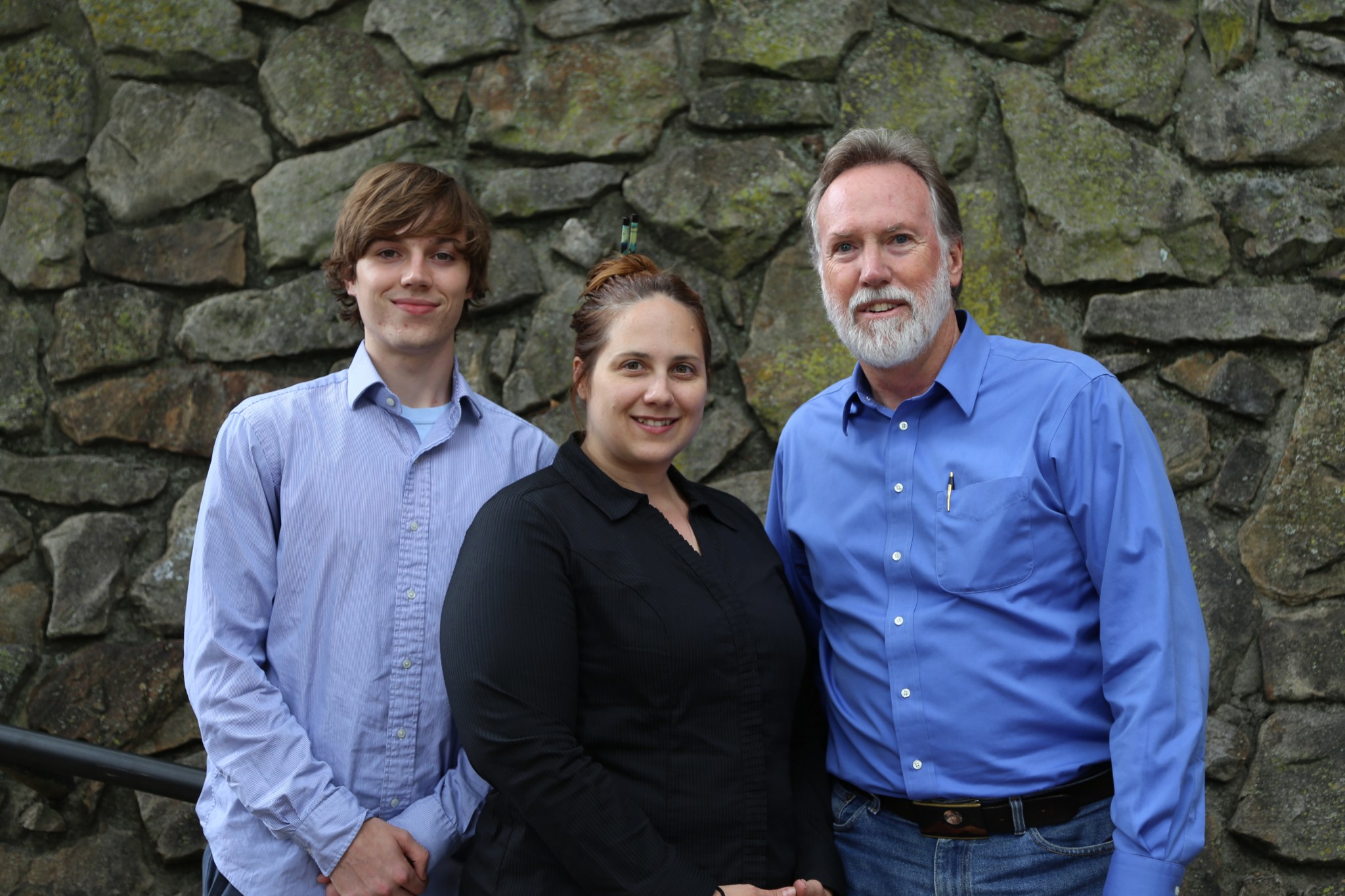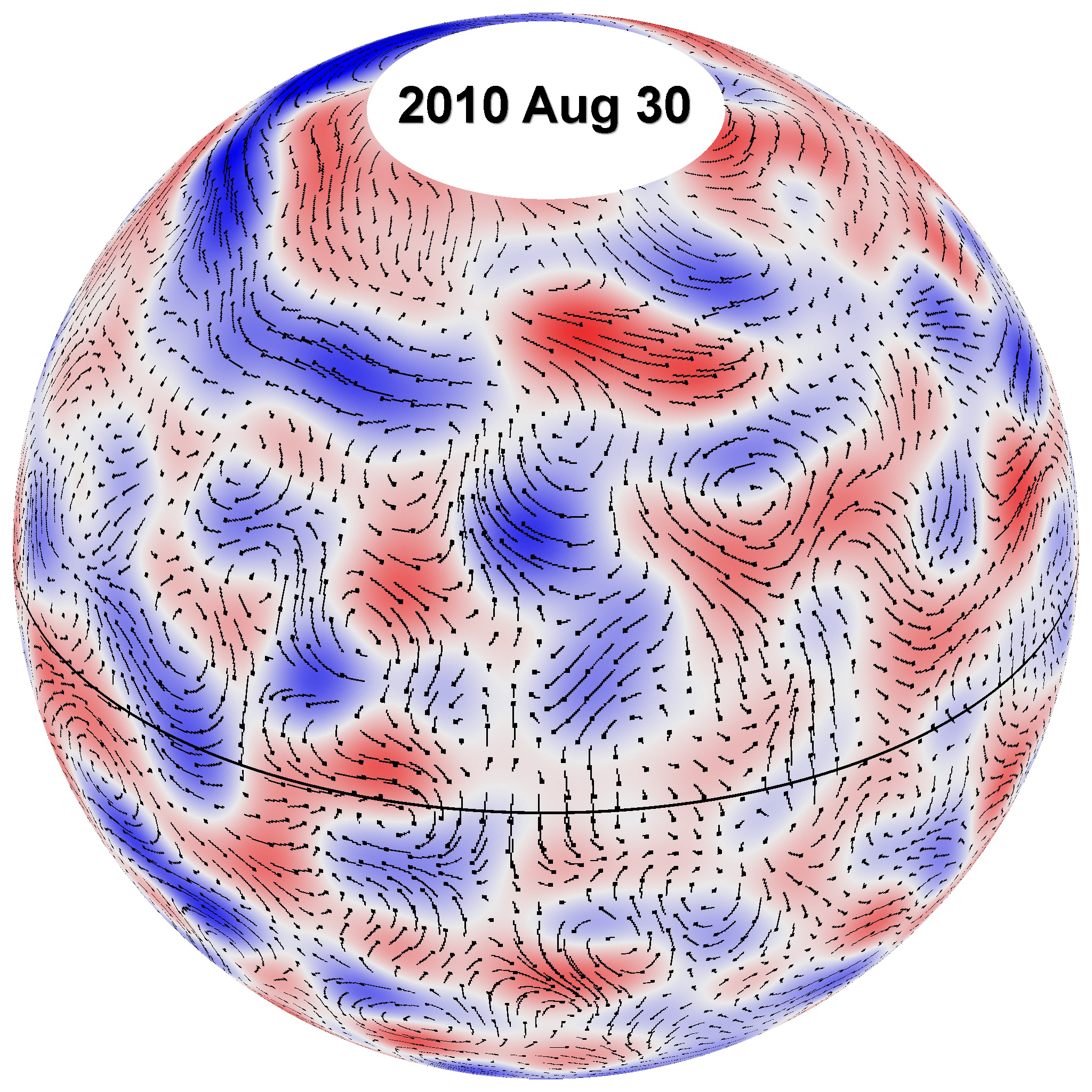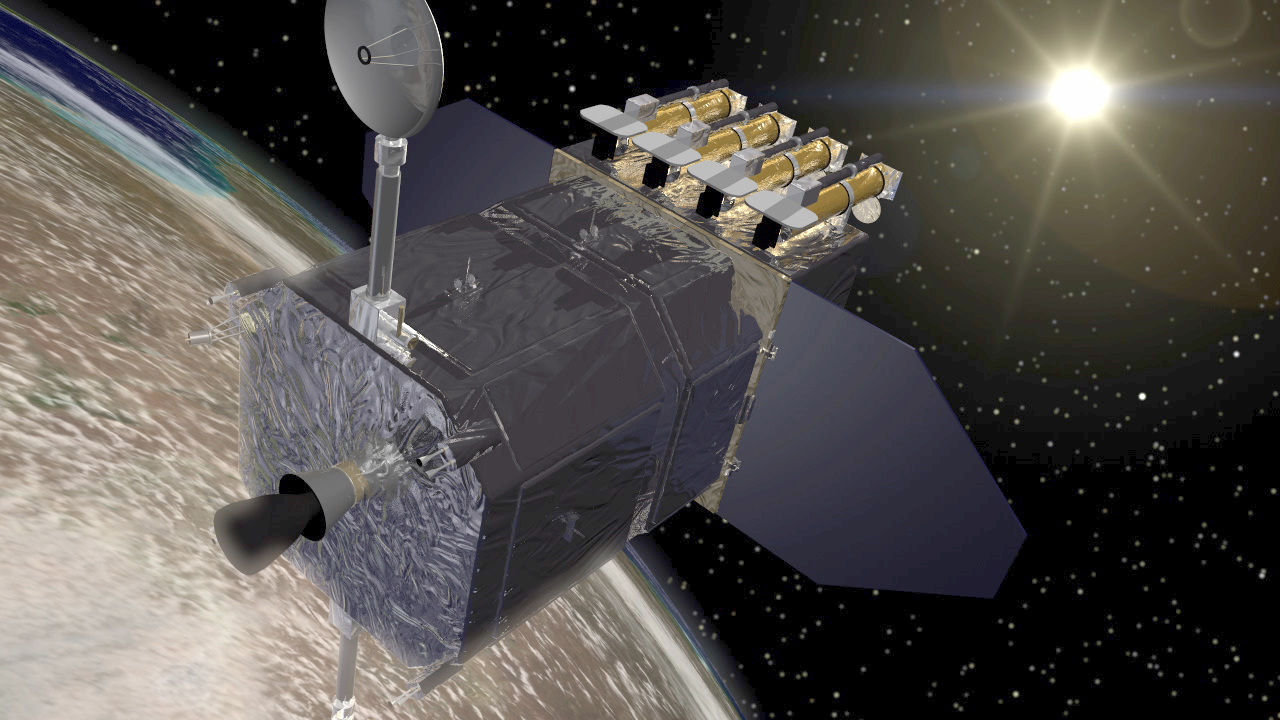A NASA astrophysicist has confirmed the existence of giant convection cells –approximately 200,000 kilometers in diameter — flowing slowly on the sun, lending further insight into the transport of heat from its core and the origin of cycles of sunspot activity that affect essential satellite-based communications such as cell phones and TV broadcasting.
The rapid movement of smaller convection cells — granules and supergranules about 1,000 and 30,000 kilometers in diameter, respectively — have long been observed through telescopes and other instruments. The existence of giant cells comprised of the smaller ones was proposed in 1968 after the discovery of supergranules, said David Hathaway, an astrophysicist at NASA’s Marshall Space Flight Center in Huntsville, Ala. But because they are so large and move so slowly, the giant cells have eluded scientists.
In a paper published today in the journal Science, Hathaway details how, in the summer of 2013, he and co-authors Lisa Upton and Owen Colegrove used data from the Helioseismic and Magnetic Imager on NASA’s Solar Dynamics Observatory to observe the movement of giant convection cells. The observatory was launched in February 2010.
“The key to this was that we were able to get continuous observations that are only available from space and from this instrument,” he said.
They looked at the motion of supergranules hourly over several 27-day solar rotations with the expectation that they would be carried from the centers to the boundaries of giant cells by the slow but long-lived flow.
When the data was examined, the movement of giant cells became obvious on the computer screen. “It just jumps right out at you,” Hathaway said. “We knew immediately.”
The findings end an intermittent quest for the scientist, who has been with NASA for 29 years. In 1975, Hathaway was a graduate student with a summer internship at Sacramento Peak Observatory in New Mexico. There he worked with George Simon, who, with Nigel Weiss, theorized the existence of the giant cells in 1968. Part of that summer was spent looking for their giant cells, Hathaway recalled, but “we didn’t have the data at the time.”
He continued looking over the years as he conducted other research and new instruments became available to study the sun. In 1996, Hathaway applied a mathematical technique he developed to information gathered by the Michelson Doppler Imager aboard the European Space Agency / NASA Solar and Heliospheric Observatory, which was launched the previous year. But the evidence for giant convection cells was still just circumstantial, a tantalizing hint “something was there that’s big. They were moving with the sun’s rotation,” said Hathaway, “but I couldn’t tell you what they look like.”
Now he can. In 2013, another summer intern, Owen Colegrove of the University of Rochester in New York, was assigned to work in Hathaway’s office at the National Space Science and Technology Center in Huntsville. Colegrove joined Lisa Upton, a graduate student of Vanderbilt University in Nashville who has worked with Hathaway since the fall of 2010, and is employed by the University of Alabama in Huntsville.
“I said, ‘Let’s go look for giant cells,’” Hathaway said. “It worked this time.”
Now, they’ll be looking at how the giant cells affect the formation of magnetic field structures on the sun, among other research. “It could help us with longer-term predictions of how big a sunspot cycle is going to be,” he said. “We may be able to look at these flows and identify areas where new sunspots are going to emerge, before we see them on the sun’s surface. That’s one of the key hopes of researchers that have looked at this in the past.”
The new findings may also help answer a question asked since the time of Galileo, a father of modern astronomy, who pointed his telescope at the sun in the 1600s: Why does material at the sun’s equator rotate more rapidly than at the poles? At the equator it takes about 25 days to go around once, but at the higher latitudes it takes about 35 days.
“You need some kind of mechanism to drive that action,” Upton said, and many theories have been proposed. Some process must cause flows near the equator to move in the direction of rotation, and flows farther from the equator to move in the opposite direction.
“These giant cells do that,” Hathaway said, and the authors address the issue in their paper. The rotation is a key part of how the sunspot cycle works, and has implications for every star, he said. The theory has been there for years, but the observation was lacking.
“We’re in the midst of a scientific revolution within the solar community on how the sunspot cycle works,” Hathaway said.



























